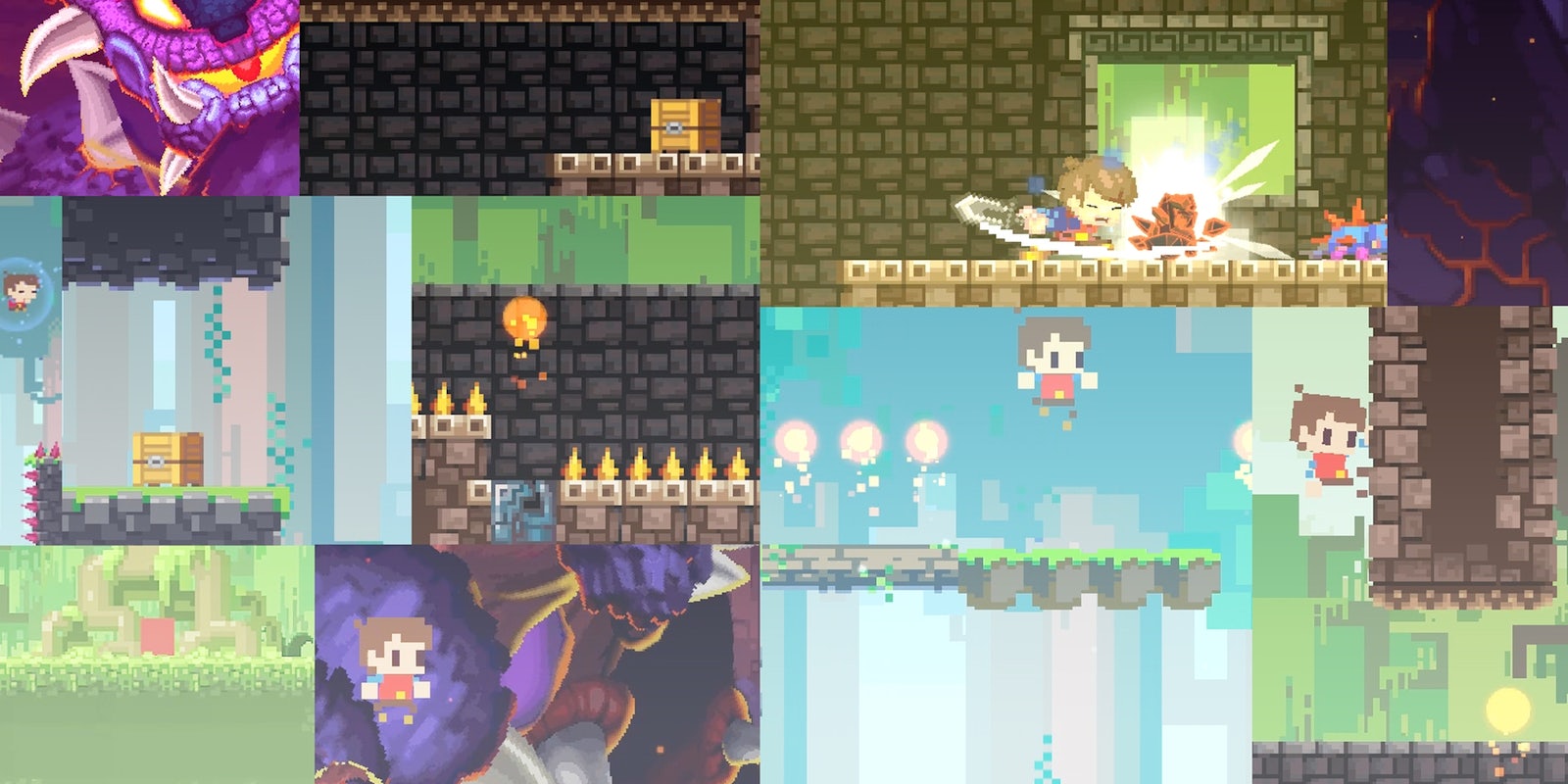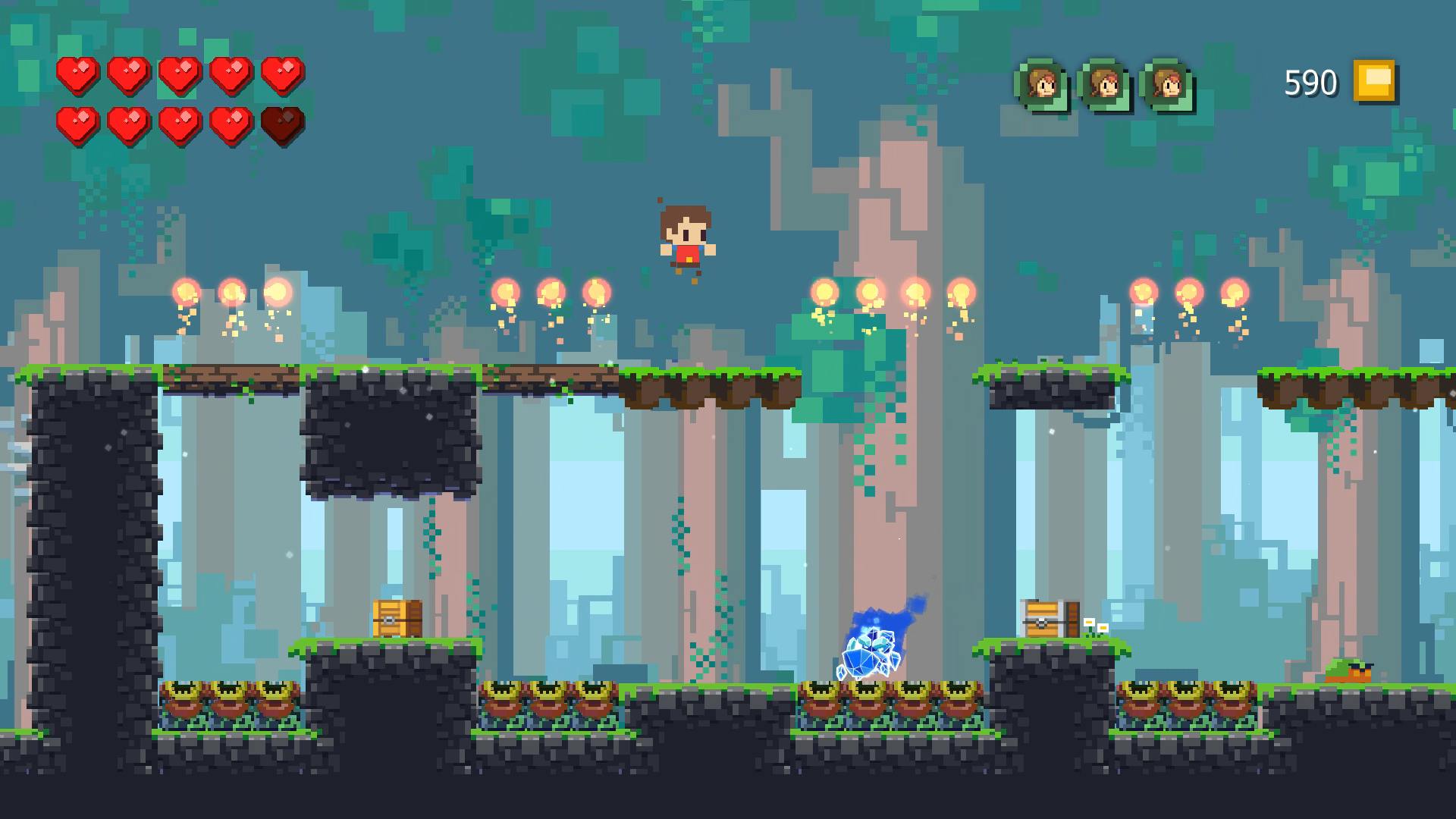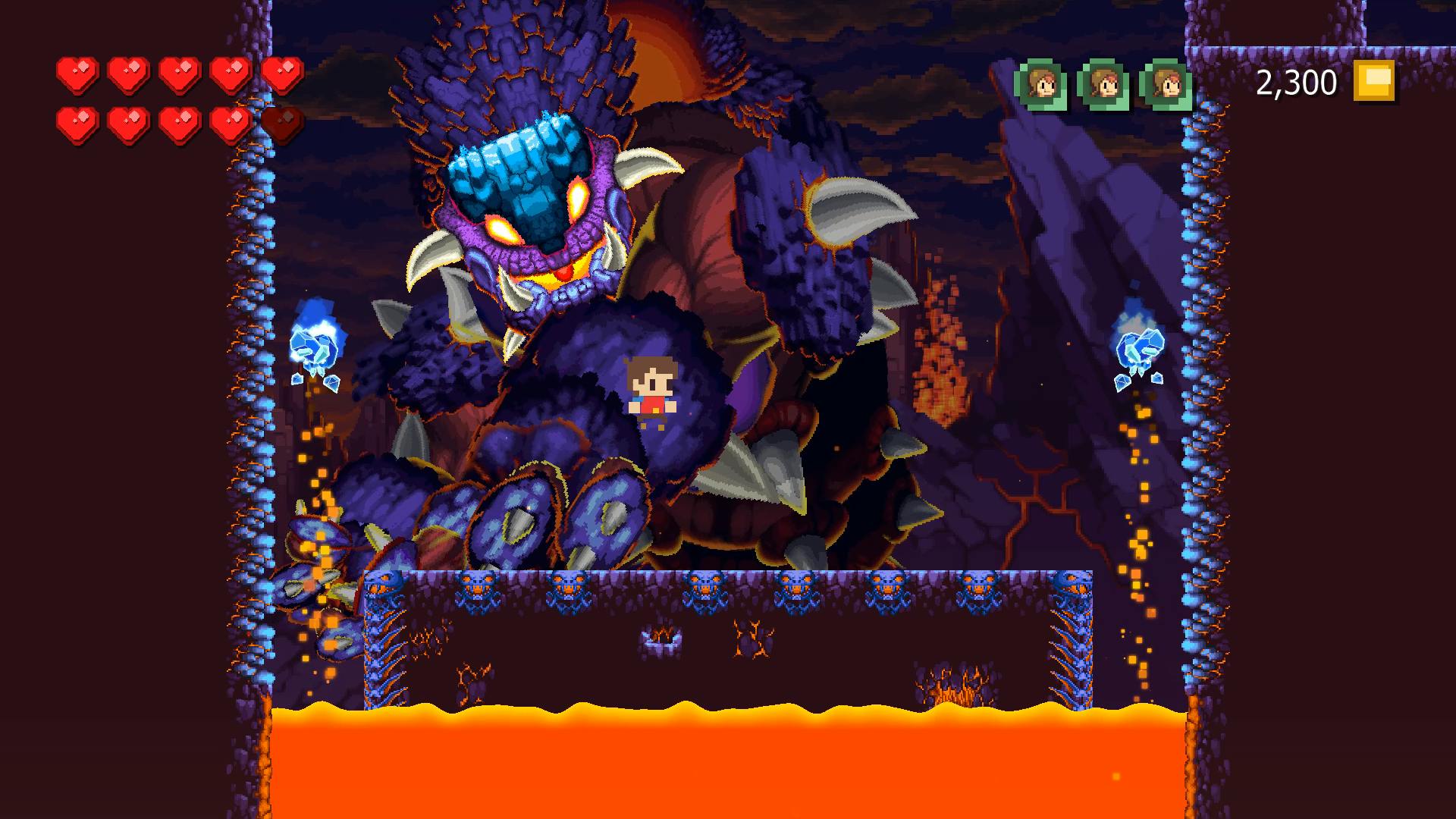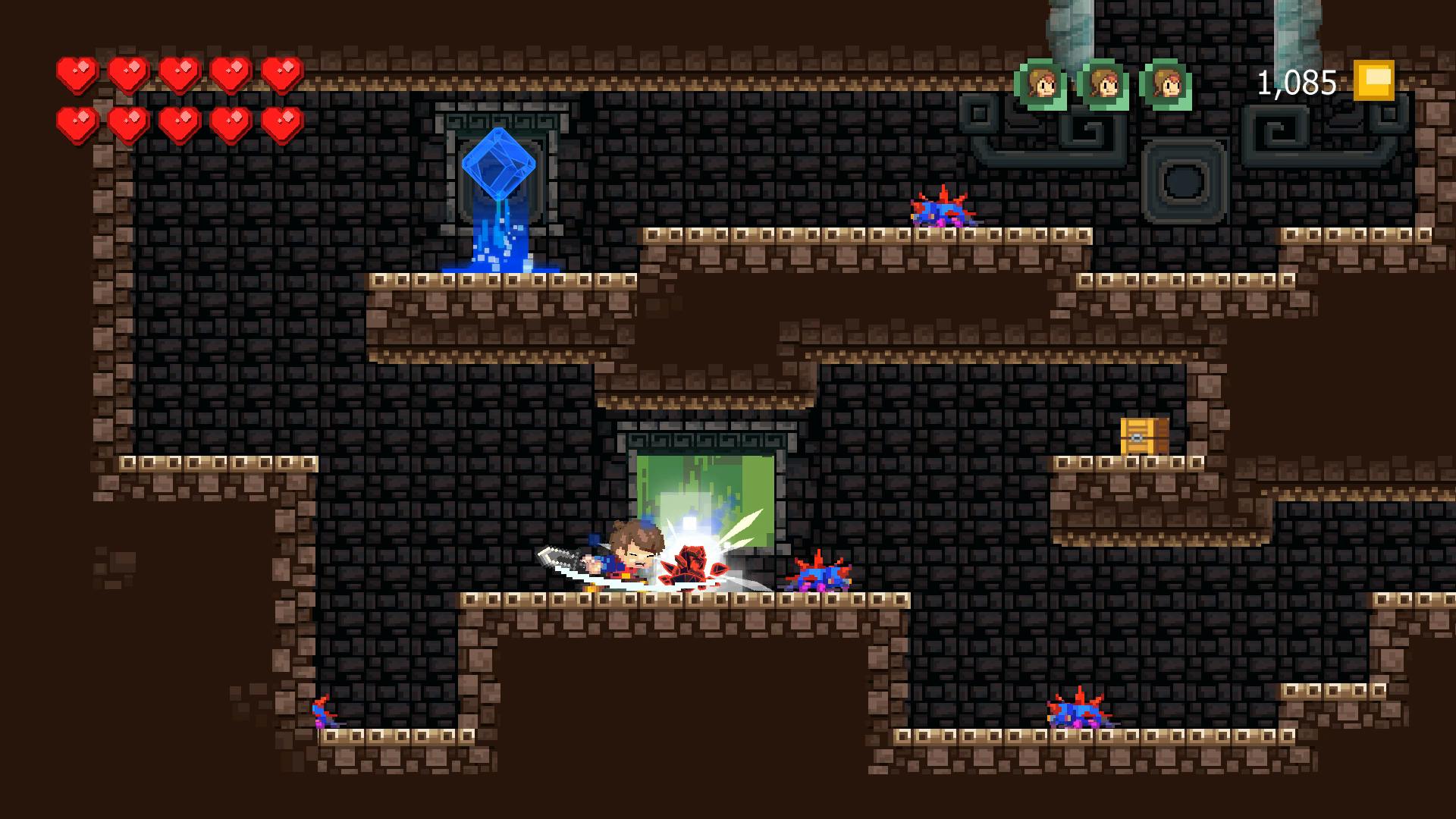As video games become larger and more complex, it’s up to the smaller studios to bring us simpler experiences we so fondly remember. Case in point: The Adventures of Pip.
It’s a 2D, side-scrolling platformer from the folks over at Tic Toc Games, and it’s the team’s most ambitious title to date.
It’s been a while since we’ve seen a game quite as cute and endearing as Pip. It stars the title’s namesake, who is a lowly resident of the Pixel Kingdom. There’s a caste system in the Pixel Kingdom, based on one’s resolution. If you’re born a single pixel, you are of the lowest caste. Those who have higher resolution, like 8-bit or 16-bit, are afforded more opportunities and privilege. It’s the 32-bit residents that make up the aristocracy.
Upon Princess Adeline’s birth, it was learned that she could create pixels from nothing. Queen DeRezzia wanted this power for herself, so she kidnapped her in hopes of controlling the bitstream.
It’s now up to Pip to save the princess. Along the way he gains the power to up his resolution, which gives him various abilities to take on the challenges the Pixel Kingdom brings forth.
While the story is a unique twist on the standard “save the princess” plot, the writing can be rather contrived. The game’s limited dialogue was written with quirkiness in mind and can come off a bit pandersome. If you’re a fan of quirky, off-kilter dialogue, then it shouldn’t bother you too much.
But criticizing the story in Pip is like criticizing Super Mario Bros. for having magical mushrooms and fire flowers. The story is just a setup for gameplay, and gameplay is king.
It’s a standard sidescrolling platformer, having you run from left to right. Here, Pip is allotted various abilities depending on which of the three forms he takes. There are certain enemies that, when hit, can bump up Pip’s resolution. Holding the L or A button allows him to transform back down. As a pixel he’s light and floaty. Later, 8-bit Pip can jump farther as well as wall jump. And 16-bit Pip is slower and heavier, but has a sword that can break blocks.
Levels are littered with enemies that, much like Mega Man or Castlevania, follow specific patterns, forcing the player to dodge and maneuver. And it’s the enemies that allow the mechanics of Pip to really shine. Maneuvering past enemies proves just how tight and responsive the controls are. Really, mechanics are so on point that if you ever find yourself failing, it’s probably your fault and not the game’s.
A single level can take you four to eight minutes to complete if you’re not rushing. Five areas contain eight levels each, minus the final area which has five. It’s quite a hefty game for an indie platformer. Levels are also varied, providing ample situations to flex your platforming muscle. Some of this includes having the player transform mid-air, using Pip’s buoyancy to leap out of water, and avoiding the occasional lava pit.
There aren’t any lives, unlike many platformers of yore, and contrasted with last year’s Shovel Knight, you won’t lose money for failing. The game will simply send you back to the last checkpoint to try again.
If there’s something holding The Adventures of Pip back its level design. Considering how great the gameplay is, it irks me to say that there’s a bit of a balancing issue between the three transformations, and that’s directly attributed to level design.
Although each transformation has its advantages, the one that players will use most often will be the second. Pixel Pip can’t do much, other than float over large chasms. The 8-bit Pip has the right speed and the wall-jump ability to navigate levels most effectively. Meanwhile, 16-bit Pip can feel like he’s simply there to break blocks.
What we’re left with is a game that has three transformations, but level design that doesn’t really take advantage of all of them. And it’s not that the level design is bad, it’s actually really good. But it lacks a certain flow that you see in, let’s say, Super Mario Bros.
But here’s the thing, the physics in Pip are excellent, easily holding it’s own against some of the best platformers out there. So we’re left with a game that has excellent controls and physics, but level design that doesn’t really allow it to shine.
There were also instances of odd hit detection. I would find myself randomly falling through platforms, making levels needlessly harder. I found one instance in which I got stuck and had to restart the level. There were also various graphical hiccups, with random framerate drops.
Granted, these instances were infrequent.
Looking past the gameplay, Pip gives players gorgeous pixel art. Animations are smooth, and transitioning between Pip’s various forms happens seamlessly. There’s a good mix of enemies, all inspired by various resolutions. Some look fresh out of an NES game, while others have a nicer graphical sheen.
But it’s the music that really ties everything together. Composer Jake Kaufman, the man behind Shovel Knight and Shantae and the Pirate’s Curse, really brings his A-game. It’s not your standard 8-bit tracks, but rather full orchestral scores, with brass, woodwinds, and strings. Melodies flutter with appropriate dissonance and build up, giving the world grand character.
The Adventures of Pip really is a great game. It does so many things right. From gameplay, to art, and even music, everything fits together. While level design may not be excellent, it’s still good, even if it does lean slightly towards Pip’s second transformation. Luckily the game’s responsiveness makes up for any shortcomings.
The Adventures of Pip is out now for Wii U and PC via Steam. It’s slated to come out for PS4, Xbox One, and OSX later this year.
Disclosure: Our PC review copy of The Adventures of Pip for Wii U was provided courtesy of Tic Toc Games.
Photos via Tic Toc Games/scmedia.com | Remix by Max Fleishman




